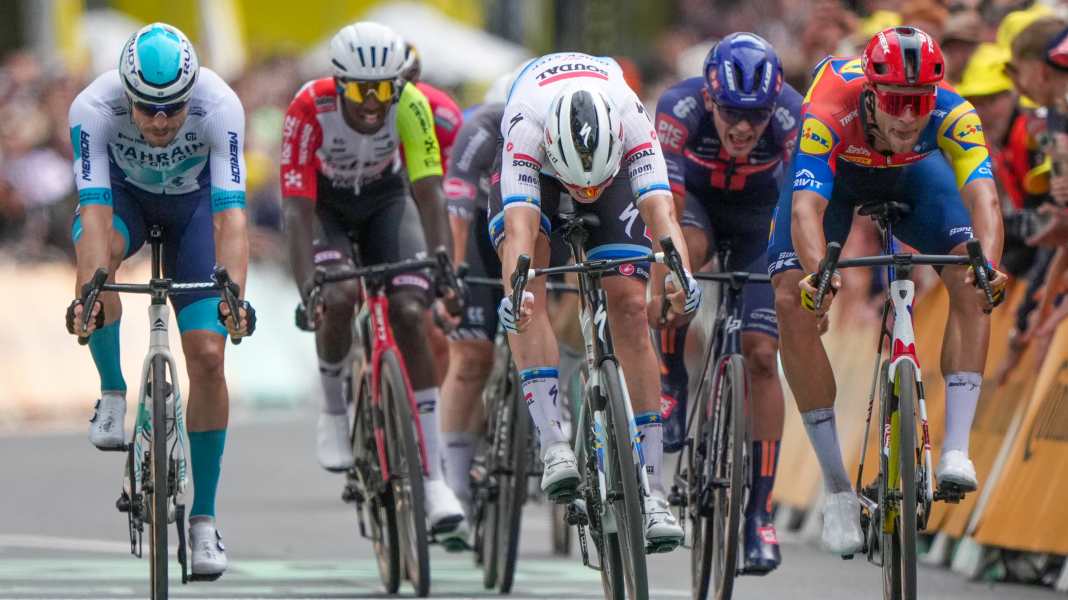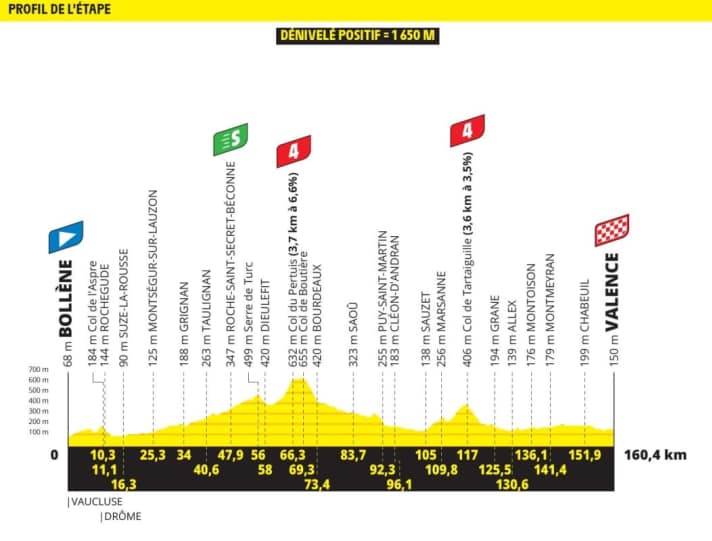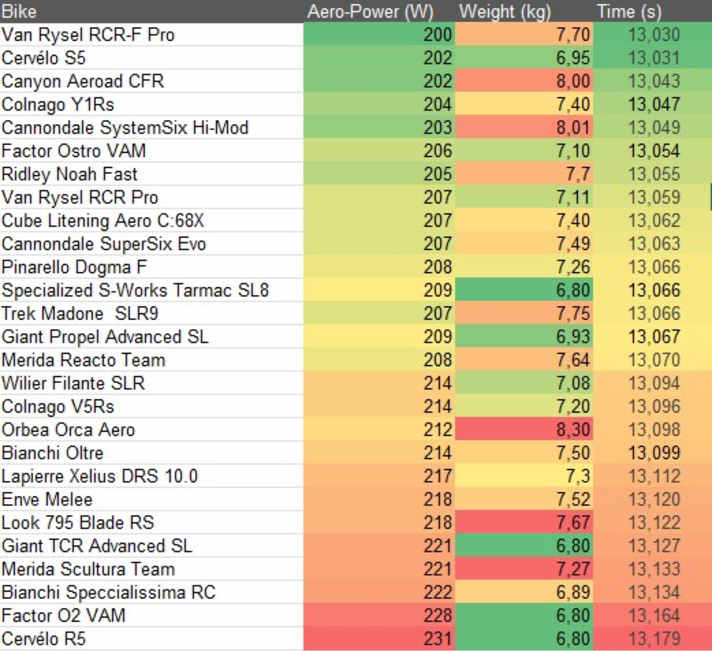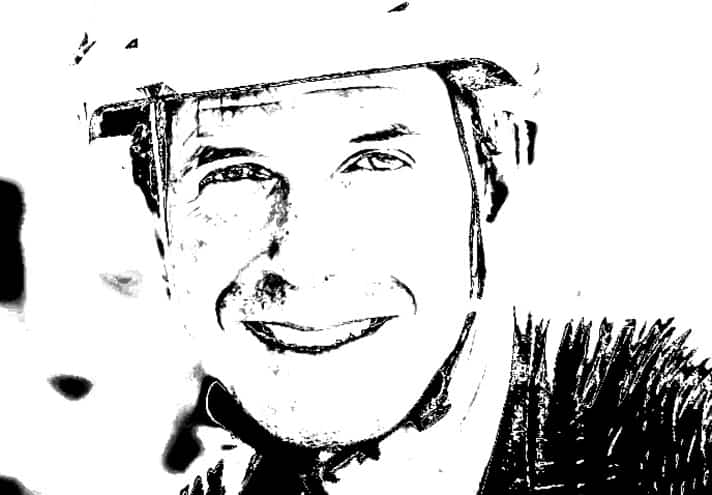
Tour de France 2025 - Stage 17: Bollène - Valence | 160,4 Kilometers

The 17th stage is probably the last chance for a mass sprint, as the finale in Paris has been made much more difficult by the Montmartre loop. Accordingly, the sprinter teams will be working hard to control the breakaway riders, who will certainly try their luck.
The approach to Valence is flat. The last five kilometers are straight on the D86, with four roundabouts to pass. 600 meters before the finish, the road turns left, and the finish approach on Boulevard Franklin Roosevelt is straight and 6.5 meters wide. Space and visibility will not be a problem, and the sprint trains can ride their captains into position. Of course, everyone will try to stay on the left side of the road, because this is the shortest route to the finish line.
In a sprint, explosiveness, stamina, and top speed are the decisive factors. In a short sprint, explosiveness is the most important factor. If the sprint starts late, the rider who can accelerate most explosively will win. There is then no time to overtake from the slipstream. In a longer sprint, stamina is crucial, but so is the achievable top speed, which in turn depends heavily on aerodynamics. For sprinters, the trick is to crouch low over the bike to develop maximum power. Tim Merlier (Soudal Quickstep), winner of the ninth stage, looked better in this aspect than Jonathan Milan (Lidl-Trek), who is taller (1.93 m) and heavier (86 kg) and certainly generates more power. Milan has already been measured at 1940 watts peak power in a sprint – a tremendous performance. Milan can also sprint for a very long time. In the fourth stage of the 2024 Giro d'Italia, Milan achieved an average of 1640 W over 20 seconds.
Who rides the faster bike, Milan or Merlier, when the sprint goes from full speed over 250 meters? We give our sprint avatar a weight of 85 kilograms and the Herculean strength of Jonathan Milan.
The number of the day: Four hundredths of a second
With Milan's power profile, our avatar reaches around 74 km/h. In our simulation, Milan's Trek Madone and Merlier's Tarmac SL 8 cross the finish line at the same time. So, it won't be the bike that decides the outcome when the two duel again. The van Rysel RCR-F Pro would be even faster, saving four hundredths of a second according to our calculations.
An overview of the (almost) complete field*

The table shows the times for a 250-meter sprint with Jonathan Milan's power profile. The bikes with the best aerodynamics are at the top.
*) The calculations are based on the bikes tested by TOUR in the laboratory and wind tunnel. The machines used in the Tour de France may differ in detail. Of course, we were not yet able to examine last-minute prototypes. Background information on the simulation.
Our expert

Robert Kühnen studied mechanical engineering, writes for TOUR about technology and training topics and develops testing methods. Robert has been refining the simulation calculations for years, they are also used by professional teams.
